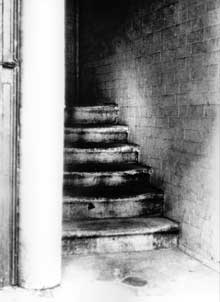Hi,
I'm assuming that when PC Long found the cloth in Goulston Street, he wasn't aware of the murder at Mitre Sq at that point.
I'm curious on why a piece of rag laying quite away in the door way would raise any suspicion about anything.
I doubt that any blood or red colour would stand out by a gas lamp in a dark corner, certainly from a slight distance.
I'm guessing back then, bits of old cloth, rubbish were strewn about every where and so wouldn't be given a second thought.
I'm also assuming the only reason a policeman would shine a lamp in such a place would be looking for vagrants or similar .
Regards.
I'm assuming that when PC Long found the cloth in Goulston Street, he wasn't aware of the murder at Mitre Sq at that point.
I'm curious on why a piece of rag laying quite away in the door way would raise any suspicion about anything.
I doubt that any blood or red colour would stand out by a gas lamp in a dark corner, certainly from a slight distance.
I'm guessing back then, bits of old cloth, rubbish were strewn about every where and so wouldn't be given a second thought.
I'm also assuming the only reason a policeman would shine a lamp in such a place would be looking for vagrants or similar .
Regards.

 ---
--- 
Comment